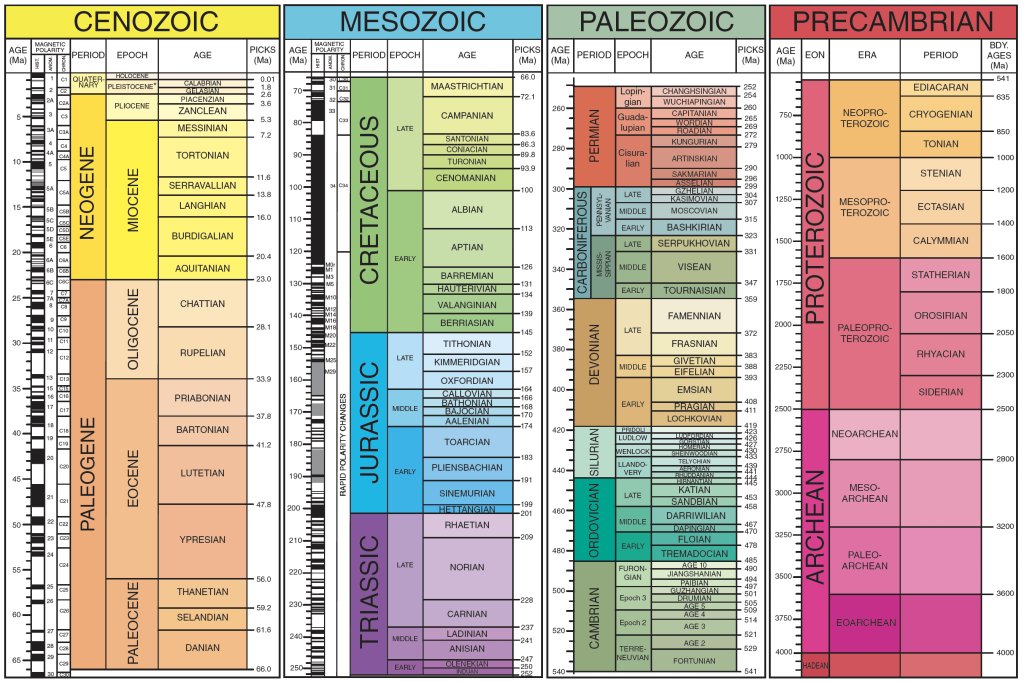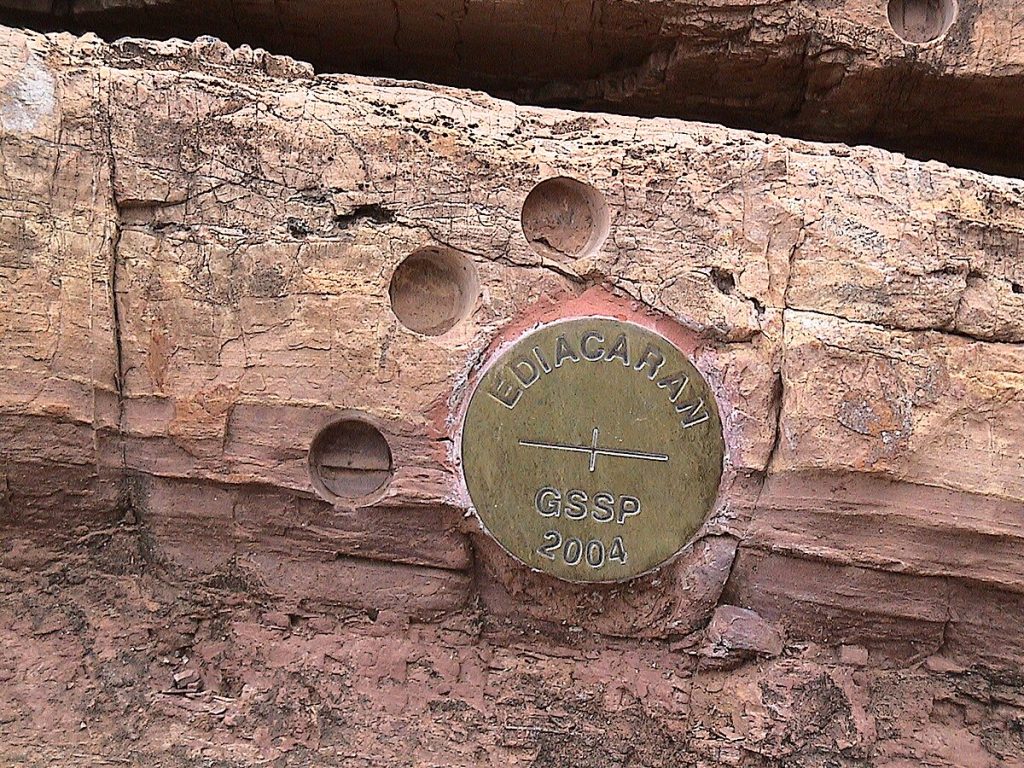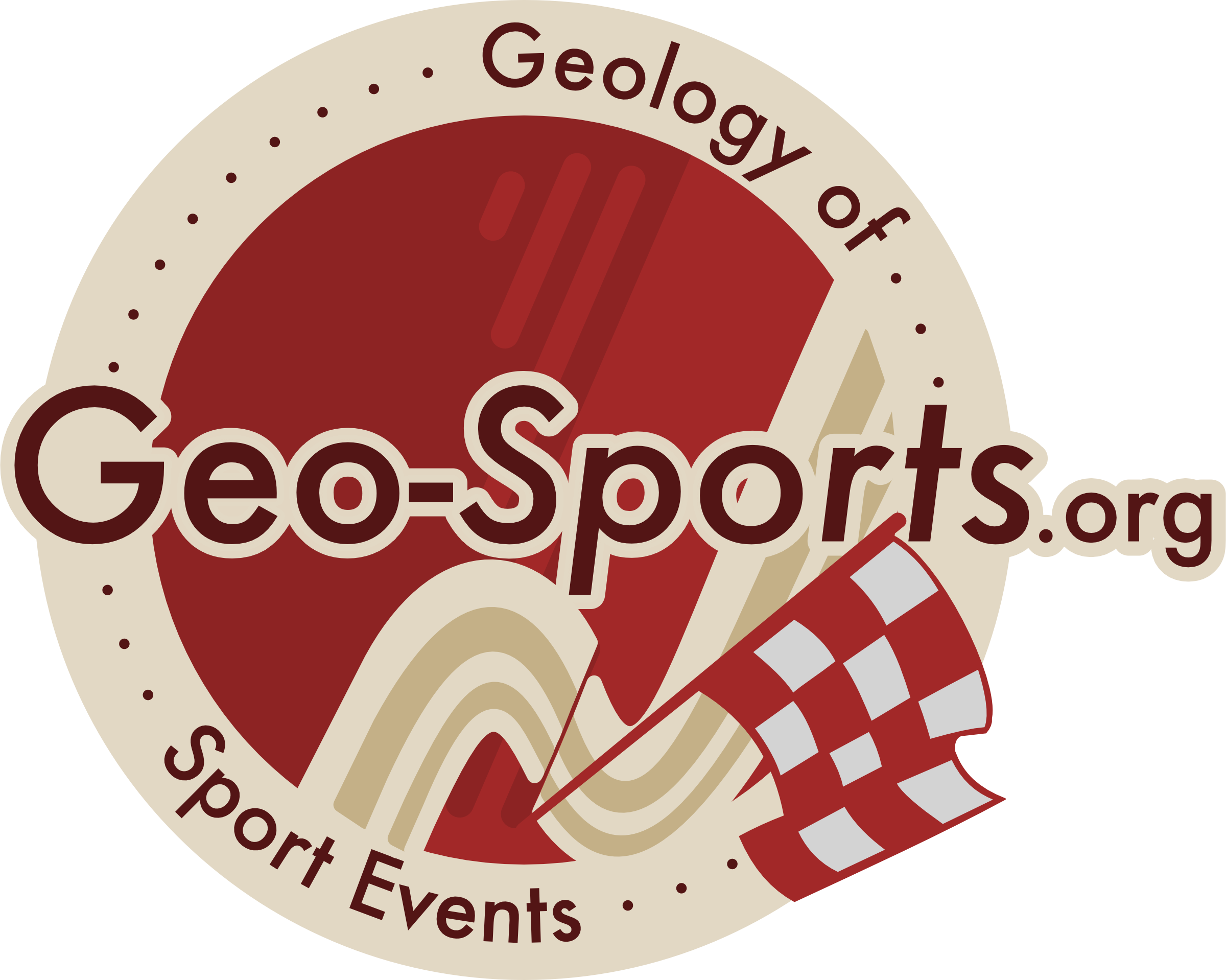Today’s stage finishes in the Jura mountains. If you could peek back ~201 million years, you can picture lava flows covering whole countries. Dinosaurs fleeing the lava and high extinction rates in the oceans due to acidification. This event forms the global stratigraphic boundary of the onset of the Jurassic. The Jurassic period is named after the Jura Mountains. This is where the period was first described. The Jurassic is well known for the many fossils. These creatures came in handy to determine the age of the different geological time spans within the Jurassic. But also led to an abundance of imagination and stories about monsters in Victorian times. And although the start of the Jurassic is well defined, the end of the Jurassic still lacks a marker, or the golden spike.
Dinosaurs
The Jura are also the site of stunning white cliffs. These limestones in the Jura Mountains were discovered by Alexander von Humboldt in 1795. He also discovered a species of penguin albeit not in France. He called these rocks the Jura limestone. In the 19th century the term Jurassic became in general use. The Jurassic period (201.3–145 million years) is probably the most well-known geological period. Owing its fame to the Jurassic Park sequel films featuring a world dominated by roaming dinosaurs. These dinosaurs walked the planes in the Jura Mountains all these millions of years ago.
You can find tracks of sauropods as we showed last year. These animals walked at a comfortable speed of 4 km/h, much faster than our peloton. But what defines the Jurassic? And why did the Jurassic become its own geological time period? How do you even define when such a period started and when it ended?

Fossil hunt
The Jurassic is incredibly fossil-rich. Shells, sea lilies and ammonites are common fossils found in the Jura region, next to those dinosaur footprints. Marine creatures were common as the Jura region looked quite different during the Jurassic stage compared to today. There were no mountains yet and the area was covered by a shallow sea. The now fossil-rich soils of the Jura are said to create a unique smoky wine profile in the region. We have yet to taste it!
The fossil-rich Jurassic sediments have attracted fossil hunters and paleontologists for centuries. Many people flock to the Jurassic coast in France and England to collect ~200 million year old fossils. These fossils are important to determine relative age of the rocks too. We use them to determine the time period. The first division of geological time is based on the occurrence and extinction of flora and fauna found in the rock layers. For the Jurassic this is primarily based on ammonite fossils. These fossils form the basis of the subzones of the Jurassic.

Ancient monsters….
Fossil collecting in Jurassic sediments was also a curiosity hobby in Victorian times. People at the time thought the fossils were antediluvian monsters. Ammonites were seen as curled up beheaded snakes. Shells were thought to be toenails of the devil. And belemnites, spines of the ancestors of squids, were hailstones. Larger creatures, such as ichtyosaurus and pleisiosaurus were true monsters from before the biblical flood.
Mary Anning, a fossil collector from Dorset, England, discovered the first near complete skeletons of these large fossils. The very first fossil skeleton she discovered when she was just twelve years old. The French geologists George Cuvier was a leading figure at the time. Mary Anning sent a drawing of her plesiosaur discovery to him. He thought the plesiosaur was fake, as the morphology of the skeleton was incomparable to any modern living animal. However, in 1825 a plesiosaur was purchased by the geologist Constant Prevost and figured by George Cuvier for 10 pounds. This specimen can still be found in the Museum National d’Histoiré Naturelle in Paris.
Mass extinction
The Jurassic world in which these creatures lived looked very different than today. We established this but how do we now set the start and the end of this time period? The Jurassic period started off dramatically with one of the largest mass-extinction events of the planets history. Fauna and flora died off due to the emplacement of large scale volcanism that erupted 1 million km3 of lava. High CO2 increases and global warming of 3-4 ºC was the consequence. This large event is globally well recognized in the rock record by changes is the type of fossils found, but also in the geochemical signature of the rocks. Combined these are good markers for the Triassic-Jurassic boundary and the start of the Jurassic period. But how do you define a new geological time period?

Geologist traditionally define the base of a stratigraphic boundary based on large biological turnover events. In the last few decades, this has been complemented by geochemical signatures, radio isotopic dates, magnetostratigraphy and astrochronology. These are all stratigraphic tools to refine the geological time scale. The International Commission on Stratigraphy (ICS) is a body that standardizes the geological time scale globally. This is so that scientists all over the world use the same names for the same stratigraphic units in time. Each time period has its own subcommission. For the Jurassic this is the subcommission on Jurassic Stratigraphy. The subcommission exists of members that are established scientists specialized in a Jurassic field.
Time scales
Each defined stratigraphic boundary has a type location chosen by the subcommission of the time period in question. This is a vigorous process in which the subcommission decides where the stage boundary is and which location shows this most characteristically. The type location of the Triassic-Jurassic boundary is the Kuhjoch section, Tyrol, Austria. If you visit this location, you can stand with one foot in the Triassic and one foot in the Jurassic. The exact location is indicated by a “golden spike”. Although these sometimes get stolen because of their name, they are actually made out of brass.

Spike wanted
Interestingly, there is no golden spike yet for the end of the Jurassic although there are candidates. This is the Jurassic–Cretaceous boundary so 145 million years ago. This is the only boundary between geological periods that remains undefined. At this boundary no big changes occur in the type of fauna and flora. And no large geochemical signatures occur in the rocks. This complicates a global stratigraphic marker. However, in the most recent published Geological Time Scale (2020) the Cretaceous working group has proposed a boundary. The boundary will be based on the spread and diversification of different microfossils and a magnetic reversal.
At this moment in time, we live in the Quaternary period and Holocene epoch. This is the last time series of the Geological Time Scale. However, there was debate on introducing the Anthropocene onto the Geological Time Scale. The Anthropocene spans the current geological time interval in which many Earth processes and conditions are strongly impacted by humans. Anthropocene is named after the Greek word for human. The human impact has intensified after the onset of the industrialization. This led to a different Earth System state typical of the Holocene. The Anthropocene Working Group, a body within the ICS, examined if the Anthropocene can become as a geological time unit with its own golden spike. The thermonuclear bombtests of the early 1950’s would serve as a global stratigraphic correlator. However, the commission has decided for now it won’t be its own period.





